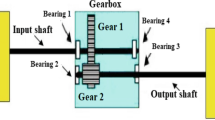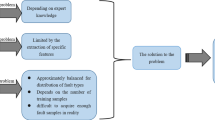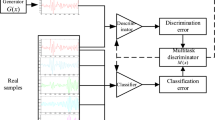Abstract
Electromechanical actuators (EMAs) are safety-critical components that work under various conditions and loads. Realizing robust and precise fault diagnosis for an EMA increases the overall availability/safety of the whole system. However, the monitoring data of an EMA are collected under different working conditions and consist of numerous unlabeled samples and few unbalanced labeled samples; this severely limits the applications of intelligent data-driven diagnosis approaches. Therefore, this paper provides an extended convolutional adversarial autoencoder (ECAAE) as an adversarial model to achieve end-to-end fault diagnosis for EMAs based only on vibration signals. This approach combines the feature extraction ability of convolutional neural networks (CNNs) with the semisupervised learning and data generation capabilities of adversarial autoencoders (AAEs) by activating different submodels during different training phases and is thus able to utilize both unlabeled and unbalanced labeled samples. With the help of a hyperparameter-free signal conversion method and an imbalance-compensation loss function, the adversarial training process of the model results in a feature extractor that is robust to varying working conditions as well as a sample generator capable of generating samples belonging to a given class. Consequently, after fine-tuning on samples rebalanced by the generator, the classifier of the ECAAE is able to perform robust and precise fault diagnosis even under various working conditions, unbalanced samples and few-shot situations. The proposed method is validated under 12 multicondition data scenarios and achieves a diagnostic accuracy above 90%, even in cases worse than 5-way 5-shot scenarios, thereby revealing its superiority over 3 state-of-the-art models.















Similar content being viewed by others
References
Qiao G, Liu G, Shi Z et al (2018) A review of electromechanical actuators for More/All Electric aircraft systems. Proc Inst Mech Eng C J Mech Eng Sci 232:4128–4151. https://doi.org/10.1177/0954406217749869
Smith MJ, Byington CS, Watson MJ et al. (2009) Experimental and analytical development of health management for Electro-Mechanical Actuators. In: 2009 IEEE Aerospace conference. IEEE, pp 1–14
Sriram N, Indranil R, Edward B et al. (2010) Combining model based and feature driven diagnosis approaches a case study on electromechanical Actuators. https://doi.org/10.36001/phmconf.2010.v2i1.1936
Dalla Vedova MDL, Germanà A, Berri PC et al (2019) Model-based fault detection and identification for prognostics of electromechanical actuators using genetic algorithms. Aerospace 6:94. https://doi.org/10.3390/aerospace6090094
Di Rito G, Luciano B, Borgarelli N et al. (2020) Health-monitoring of a jamming-tolerant electro-mechanical actuator with differential ball screws. In: 2020 IEEE 7th International Workshop on Metrology for AeroSpace (MetroAeroSpace). IEEE, pp 84–89
de Martini D, Facchinetti T (2020) Fault detection of electromechanical actuators via automatic generation of a fuzzy index. IEEE/ASME Trans Mechatron 25:2197–2207. https://doi.org/10.1109/tmech.2020.3011005
Wen L, Li X, Gao L et al (2018) A new convolutional neural network-based data-driven fault diagnosis method. IEEE Trans Ind Electron 65:5990–5998. https://doi.org/10.1109/TIE.2017.2774777
Chirico AJ, Kolodziej JR (2014) A data driven methodology for fault detection in electromechanical actuators. J Dyn Sys, Meas, Control 10(1115/1):4026835
Liu H, Jing J, Ma J (2018) Fault diagnosis of electromechanical actuator based on VMD multifractal detrended fluctuation analysis and PNN. Complexity 2018:1–11. https://doi.org/10.1155/2018/9154682
Riaz N, Shah SIA, Rehman F et al (2020) A novel 2-D current signal-based residual learning with optimized softmax to identify faults in ball screw actuators. IEEE Access 8:115299–115313. https://doi.org/10.1109/access.2020.3004489
Ruiz-Carcel C, Starr A (2018) Data-based detection and diagnosis of faults in linear actuators. IEEE Trans Instrum Meas 67:2035–2047. https://doi.org/10.1109/TIM.2018.2814067
Lei Y, Yang B, Jiang X et al (2020) Applications of machine learning to machine fault diagnosis: a review and roadmap. Mech Syst Signal Process 138:106587. https://doi.org/10.1016/j.ymssp.2019.106587
Liang Y, Li B, Jiao B (2021) A deep learning method for motor fault diagnosis based on a capsule network with gate-structure dilated convolutions. Neural Comput & Applic 33:1401–1418. https://doi.org/10.1007/s00521-020-04999-0
Yang J, Guo Y, Zhao W (2019) Long short-term memory neural network based fault detection and isolation for electro-mechanical actuators. Neurocomputing 360:85–96. https://doi.org/10.1016/j.neucom.2019.06.029
Yang N, Shen J, Jia Y et al. (2020) Fault diagnosis of electro-mechanical actuator based on deep learning network. In: 2020 39th Chinese Control Conference (CCC). IEEE, pp 4002–4006
Peng G, Zheng Y, Li J et al (2021) A single upper limb pose estimation method based on the improved stacked hourglass network. Int J Appl Math Comput Sci 31:123–133
Siahpour S, Li X, Lee J (2020) Deep learning-based cross-sensor domain adaptation for fault diagnosis of electro-mechanical actuators. Int J Dynam Control 8:1054–1062. https://doi.org/10.1007/s40435-020-00669-0
Goodfellow I, Pouget-Abadie J, Mirza M et al (2020) Generative adversarial networks. Commun ACM 63:139–144. https://doi.org/10.1145/3422622
Ding Y, Ma L, Ma J et al (2019) A generative adversarial network-based intelligent fault diagnosis method for rotating machinery under small sample size conditions. IEEE Access 7:149736–149749. https://doi.org/10.1109/ACCESS.2019.2947194
Makhzani A, Shlens J, Jaitly N et al. (2015) Adversarial Autoencoders
Wang Y, Sun G, Jin Q (2020) Imbalanced sample fault diagnosis of rotating machinery using conditional variational auto-encoder generative adversarial network. Appl Soft Comput 92:106333. https://doi.org/10.1016/j.asoc.2020.106333
Pan T, Chen J, Qu C et al (2021) A method for mechanical fault recognition with unseen classes via unsupervised convolutional adversarial auto-encoder. Meas Sci Technol 32:35113. https://doi.org/10.1088/1361-6501/abb38c
Balaban E, Saxena A, Narasimhan S et al (2015) Prognostic health-management system development for electromechanical actuators. J Aerosp Inform Syst 12:329–344. https://doi.org/10.2514/1.I010171
Martin A, Soumith C, Léon B (2017) Wasserstein generative adversarial networks. International Conference on Machine Learning: pp. 214–223
Ishaan G, Faruk A, Martin A et al. Improved Training of Wasserstein GANs
Lin T-Y, Goyal P, Girshick R et al. (2017) Focal loss for dense object detection. In: 2017 IEEE International Conference on Computer Vision (ICCV). IEEE
Lei Y, Jia F, Lin J et al (2016) An intelligent fault diagnosis method using unsupervised feature learning towards mechanical big data. IEEE Trans Ind Electron 63:3137–3147. https://doi.org/10.1109/TIE.2016.2519325
Chawla NV, Bowyer KW, Hall LO et al (2002) SMOTE: synthetic minority over-sampling technique. Jair 1(16):321–357. https://doi.org/10.1613/jair.953
Lu C, Wang Z-Y, Qin W-L et al (2017) Fault diagnosis of rotary machinery components using a stacked denoising autoencoder-based health state identification. Signal Process 130:377–388. https://doi.org/10.1016/j.sigpro.2016.07.028
Zhou F, Yang S, Fujita H et al (2020) Deep learning fault diagnosis method based on global optimization GAN for unbalanced data. Knowl-Based Syst 187:104837. https://doi.org/10.1016/j.knosys.2019.07.008
Guo S, Yang T, Gao W et al (2018) A novel fault diagnosis method for rotating machinery based on a convolutional neural network. Sensors (Basel). https://doi.org/10.3390/s18051429
Lu C, Wang Y, Ragulskis M et al (2016) Fault diagnosis for rotating machinery: a method based on image processing. PLoS ONE 11:e0164111. https://doi.org/10.1371/journal.pone.0164111
Ren Z, Zhu Y, Yan K et al (2020) A novel model with the ability of few-shot learning and quick updating for intelligent fault diagnosis. Mech Syst Sig Process 138:106608. https://doi.org/10.1016/j.ymssp.2019.106608
Acknowledgements
This research is supported by the National Natural Science Foundation of China (Grant Nos. 61973011 and 61803013), the Fundamental Research Funds for the Central Universities (Grant Nos. YWF-21-BJ-J-723, YWF-21-BJ-J-517 and ZG140S1993), as well as the Capital Science & Technology Leading Talent Program (Grant No. Z191100006119029). The authors also would like to extend their gratitude to NASA Ames Research Center for its open access to the FLEA data.
Funding
This study is supported by the National Natural Science Foundation of China (Grant Nos. 61973011 and 61803013), the Fundamental Research Funds for the Central Universities (Grant Nos. YWF-21-BJ-J-723, YWF-21-BJ-J-517 and ZG140S1993), as well as the Capital Science & Technology Leading Talent Program (Grant No. Z191100006119029).
Author information
Authors and Affiliations
Corresponding author
Ethics declarations
Conflict of interest
There is no conflict of interests regarding the publication of this paper.
Availability of data and material
Data used in this article are available on https://c3.nasa.gov/dashlink/projects/45/resources/.
Additional information
Publisher's Note
Springer Nature remains neutral with regard to jurisdictional claims in published maps and institutional affiliations.
Rights and permissions
About this article
Cite this article
Wang, C., Tao, L., Ding, Y. et al. An adversarial model for electromechanical actuator fault diagnosis under nonideal data conditions. Neural Comput & Applic 34, 5883–5904 (2022). https://doi.org/10.1007/s00521-021-06732-x
Received:
Accepted:
Published:
Issue Date:
DOI: https://doi.org/10.1007/s00521-021-06732-x




